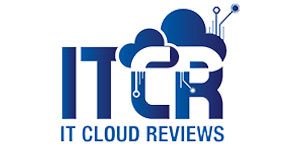Cloud computing has revolutionized the way businesses and individuals manage and store data, run applications, and perform complex computations. By leveraging the power of the internet, cloud computing offers scalable, flexible, and cost-effective solutions for various IT needs. This guide will provide an overview of cloud computing, addressing some frequently asked questions to help you understand its benefits, challenges, and applications.
Table of Contents
Cloud Computing: Everything you need to know
Cloud computing , is a data storage system that is offered over the Internet and that is housed in what we know today as “the cloud“. This cloud is made up of different servers that allow us to access information whenever and wherever we want , from any device as long as we have internet access.
Cloud computing is typically provided through three main models: Software as a Service (SaaS), Platform as a Service (PaaS), and Infrastructure as a Service (IaaS).
What is Cloud Computing?
Cloud computing is the delivery of computing services, including storage, processing power, and software, over the internet (the cloud). Instead of owning and maintaining physical servers and data centers, businesses and individuals can access these resources on-demand from cloud service providers like Amazon Web Services (AWS), Microsoft Azure, and Google Cloud Platform. This model offers flexibility, scalability, and cost savings by allowing users to pay only for the resources they use.
IaaS provides virtualized computing resources, such as virtual machines, storage, and network infrastructure, over the internet. Examples of IaaS include Amazon Web Services (AWS), Microsoft Azure, and Google Cloud Platform.
What are the main benefits of cloud computing?
Cost reduction: By not having to have their own hosting system in the offices, companies can save between 20% and 30%. In addition, the company can also save the investment in software licenses and focus exclusively on its activity without having to dedicate resources and time to technological maintenance.
Cloud computing offers numerous benefits, including:
- Cost Efficiency: Reduces the need for physical hardware and maintenance costs by offering a pay-as-you-go model.
- Scalability: Allows users to scale resources up or down based on demand, providing flexibility for growing businesses.
- Accessibility: Enables access to applications and data from anywhere with an internet connection, promoting remote work and collaboration.
- Reliability: Offers high availability and disaster recovery options, ensuring continuous operation and data protection.
- Security: Provides advanced security measures and compliance certifications to protect sensitive data.
Accessibility: Mobility is one of the clear advantages of cloud computing. Information can be accessed from any device and from anywhere. Wherever you are, you can have access to all the company’s information, which becomes a competitive advantage when it comes to attracting and retaining digital talent.
Also Read: What is a Wi-Fi calling and How to fix all your Wi-Fi calling issues
Cloud Computing Advantages
Savings: In cloud computing you only pay for what you use. The company hires only the services it needs at any given time and can vary and adjust the service according to its needs online and immediately. In addition, since the storage capacity is unlimited, companies can save on expanding their own equipment.
Security: The information is stored in the cloud eliminating the worry of possible data loss in the event of a cyber attack or virus, unlike traditional computing. In this sense, backup copies, despite being vital in all businesses, are not usually carried out as they should be. Cloud computing eliminates this need and employees can rest easy as the cloud does it automatically.
Equality: Cloud computing breaks down the barriers between small and medium-sized businesses and large corporations. It promotes a fair and equal market since, with a minimum investment, any company can have large amounts of storage without the need for large surfaces to store that data.
Cloud Computing Resources
Cloud computing , often referred to simply as “the cloud”, is the provision of computing resources on demand, from applications to data centers, over the Internet and on a pay-as-you-go basis.
- Goals; The goal of this module is to introduce students to the fundamentals of cloud computing and the tools offered by some of the major commercial providers. Students will be able to use these tools to carry out projects related to Big Data Analysis.
- Technologies: Students will use compute and storage resources from commercial providers, such as Google and Amazon (including virtual machines, databases, data analysis and visualization tools), at the user level.
- Pre requirements: Students must know how to handle the basic console commands of the Linux operating system. On the other hand, students must have basic knowledge of data analysis and visualization and must know how to make medium-level queries in an SQL-type language. Notions of web programming (HTML, Javascript, JSP).
Cloud computing offers several advantages over traditional computing models, including cost savings, scalability, and flexibility. With cloud computing, businesses can quickly and easily scale up or down as needed, only paying for the resources they use. Additionally, cloud computing allows users to access their applications and data from anywhere with an internet connection, increasing flexibility and productivity. However, cloud computing also poses some unique challenges, such as data security and privacy concerns, vendor lock-in, and the need to ensure regulatory compliance.
What are the different types of cloud computing services?
public storage: The data is stored in a public cloud, open for use by anyone who wants it. This service can be free or paid for, being able to acquire different plans depending on the storage capacity that we require, the bandwidth and the different facilities that the service provider can provide us. This type of storage is offered by Amazon, Microsoft’s Azure or Google Engine.
Cloud computing services are generally categorized into three main types:
- Infrastructure as a Service (IaaS): Provides virtualized computing resources over the internet, such as virtual machines, storage, and networking. Examples include AWS EC2 and Google Compute Engine.
- Platform as a Service (PaaS): Offers a platform allowing customers to develop, run, and manage applications without dealing with the underlying infrastructure. Examples include Microsoft Azure App Service and Google App Engine.
- Software as a Service (SaaS): Delivers software applications over the internet, which are managed by a third-party provider. Examples include Google Workspace, Salesforce, and Microsoft Office 365.
Cloud Computing: Types and Characteristics
private storage: When the company is very large or complex, it is best to opt for a private cloud. The data is stored in the cloud, but within a local environment that is difficult for anyone outside the company to access, for security reasons. One of the most notable private storage systems is Openstack, an OpenSource solution.
hybrid storage: This type of cloud combines the two previous ones, companies can take advantage of the characteristics of the private cloud, but resort to the use of a public cloud, for example, when contracting services to third parties that are not within the company itself. This type of solution has great potential since it allows the company’s storage system to grow based on needs while centralizing its resources.
What are the potential challenges of cloud computing?
While cloud computing offers many advantages, there are also challenges to consider:
- Security and Privacy: Concerns about data breaches and unauthorized access can be mitigated with robust security practices and compliance with regulations.
- Downtime and Reliability: Dependence on internet connectivity and potential service outages can impact access to cloud resources.
- Cost Management: Unexpected costs can arise from uncontrolled resource usage, making cost monitoring and management essential.
- Vendor Lock-In: Switching between cloud providers can be complex and costly due to differences in platforms and services.
- Compliance and Legal Issues: Ensuring compliance with industry-specific regulations and data residency requirements can be challenging.
SaaS, PaaS, IaaS
With the arrival of cloud computing , many companies have seen their internal processes modified and, although it has been implemented for some years now, many companies are still reluctant to accept all the advantages that cloud storage can offer them. The duty of today’s leaders is to help digital transformation reach all departments and all companies and thus facilitate the recruitment and retention of future professionals.
Depending on the level at which they operate, the types and characteristics of cloud computing can be:
- SaaS (Software as a service): This model centralizes and hosts the data we store on a single server external to the company. The user finds all the tools he needs to implement all the processes necessary for the company.
- PaaS (Platform as a service): PaaS is the intermediate service that we can obtain between SaaS and Iaas. This system allows the development and implementation on a platform located in the cloud of different web applications and services for different users and clients. In this case, tools and utilities are offered to facilitate the construction of applications.
- IaaS (Infrastructure as a service): In this case, there is no added value, the provider provides the infrastructure to host different tools that the company itself has developed and that for different reasons it does not want to host on its server. It is profitable to the extent that you only pay for what you use.
How do businesses decide which cloud computing model to adopt?
SaaS allows users to access software applications over the internet, rather than having to install and run the software on their own computers or devices. Examples of SaaS include online productivity tools like Google Docs and Microsoft Office 365, customer relationship management (CRM) software like Salesforce, and video conferencing tools like Zoom.
Businesses should consider several factors when choosing a cloud computing model:
- Business Needs: Assess specific requirements, such as scalability, security, and compliance needs.
- Budget: Evaluate cost implications, including initial setup, ongoing usage, and potential hidden costs.
- Technical Expertise: Consider the available technical skills and resources to manage and maintain the chosen cloud model.
- Vendor Reputation: Research the reliability, security, and support provided by potential cloud service providers.
- Hybrid Solutions: Explore hybrid cloud options that combine public and private clouds for greater flexibility and control.
PaaS provides a platform for developers to build, test, and deploy applications without having to manage the underlying infrastructure. Examples of PaaS include Google App Engine, Microsoft Azure, and Salesforce’s Heroku.
Also Read: The Ultimate Guide to Ncsecu.org Login: How to Access Your Account with Ease
Conclusion
Cloud computing is a model of computing that involves accessing and using computer resources, including software, storage, and processing power, over the internet rather than from a local computer or server. In cloud computing, these resources are provided by third-party service providers who own and maintain the infrastructure necessary to deliver these services.
Cloud computing has transformed the IT landscape, offering powerful and flexible solutions for a wide range of applications. By understanding the different types of cloud services, benefits, challenges, and considerations for adoption, businesses and individuals can make informed decisions to leverage the full potential of the cloud. As technology continues to evolve, staying updated on cloud computing trends and best practices will be essential for maximizing its advantages and ensuring long-term success.











